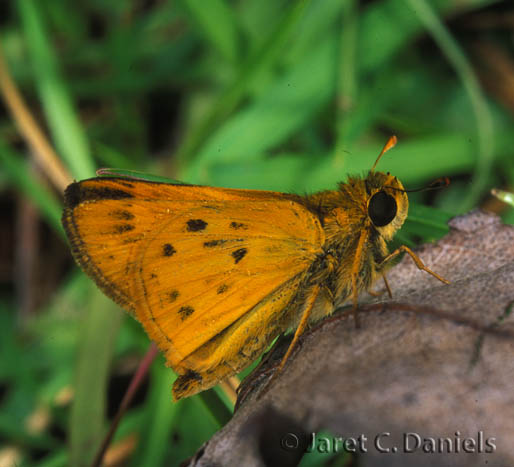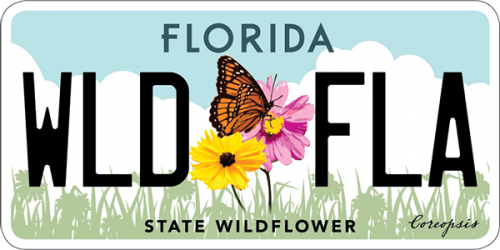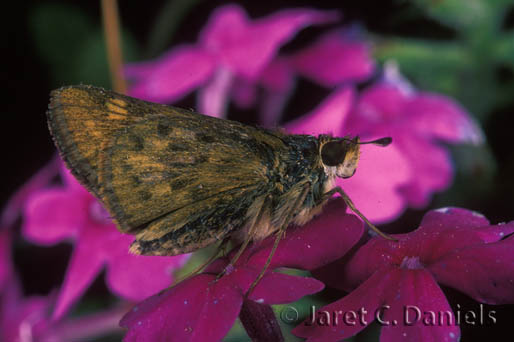- Family name: Hesperiidae/Skippers
- General description: Sexually dimorphic; male bright orange with jagged black border and black forewing stigma. Female dark brown with orange spots. Ventral hindwing yellow-orange with numerous small dark brown spots, larger and more numerous in females.
- Field Marks: Forewing elongated. Ventral hindwing yellow-orange with numerous small dark brown spots.
- Sexes: Appear different
- Wingspan: 32-38 mm

- Life Cycle: Egg: White, laid singly on host leaves Mature larva: Brown with numerous tiny, dark brown spots and a dark brown dorsal line. Head black. Chrysalis: Light yellow-brown with two dark brown longitudinal stripes.
- Number of Generations: Three or more
- Flight Season: All year
- Abundance: common
- Habitat: Roadsides, disturbed sites, pastures, old fields, lawns, gardens
- Counties: Alachua, Baker, Bay, Bradford, Brevard, Broward, Calhoun, Charlotte, Citrus, Clay, Collier, Columbia, De Soto, Dixie, Duval, Escambia, Flagler, Franklin, Gadsden, Gilchrist, Glades, Gulf, Hamilton, Hardee, Hendry, Hernando, Highlands, Hillsborough, Holmes, Indian River, Jackson, Jefferson, Lafayette, Lake, Lee, Leon, Levy, Liberty, Madison, Manatee, Marion, Martin, Miami-Dade, Monroe, Nassau, Okaloosa, Okeechobee, Orange, Osceola, Palm Beach, Pasco, Pinellas, Polk, Putnam, Santa Rosa, Sarasota, Seminole, St. Johns, St. Lucie, Sumter, Suwannee, Taylor, Union, Volusia, Wakulla, Walton, Washington
- Larval Host Plants: Various grasses (Poaceae) including Bermudagrass (Cynodon dactylon) and St. Augustinegrass (Stenotaphrum secundatum)
- Similar Species: No similar species
- Additional Information: Range is limited in Nebraska, Colorado, Nevada and New Mexico. Adults scurry low to the ground with a rapid, darting flight. Larvae construct individual shelters at base of host. Partially grown larvae overwinter.
 The Florida Wildflowers & Butterflies projects at the Florida Museum are sponsored in part by the State of Florida and the Florida Wildflower Foundation, Inc.
The Florida Wildflowers & Butterflies projects at the Florida Museum are sponsored in part by the State of Florida and the Florida Wildflower Foundation, Inc.
